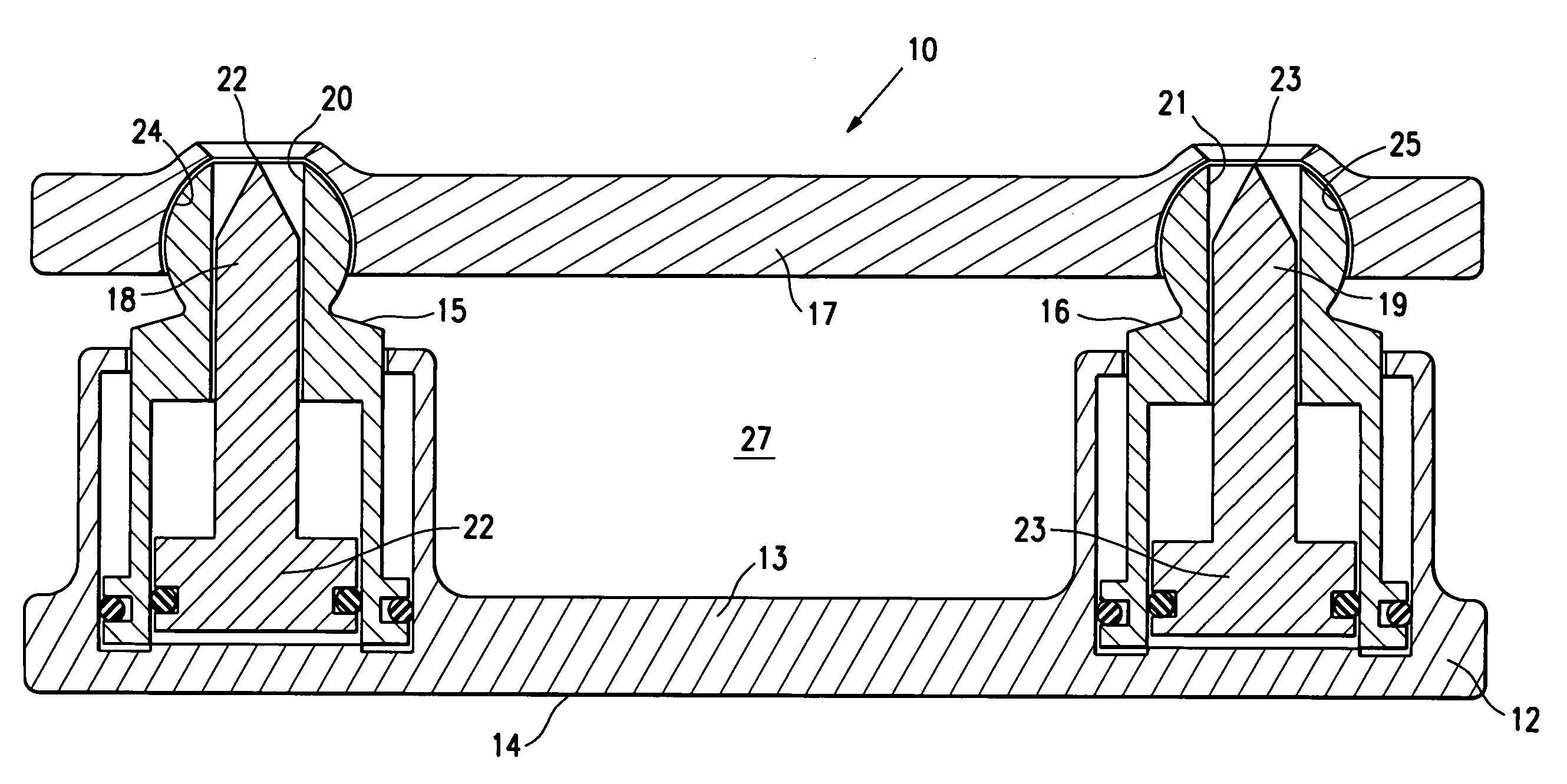Spinal implant with expandable fixation
a spinal implant and expandable technology, applied in the field of expandable spinal implants, can solve the problems of inability to expand and distract the endplates, inability to reliably improve the space for neural elements, and existing static cages, so as to reduce the chance of implant fixation loss, facilitate installation, and reduce the effect of pulling strength
- Summary
- Abstract
- Description
- Claims
- Application Information
AI Technical Summary
Benefits of technology
Problems solved by technology
Method used
Image
Examples
Embodiment Construction
[0024]FIG. 1 illustrates location of spinal implant or SEC 10 between adjacent lumbar vertebrae in an expanded configuration. A partial or complete discectomy is performed prior to the insertion of the spinal implant 10 in a conventional manner. The SEC 10 is introduced in its unexpanded state to enable it to be inserted posteriorly with minimal trauma to the patient and risk of injury to nerve roots. Once in place the SEC 10 can be expanded to provide both medial and lateral spinal correction. The SEC has an unexpanded height of about 5 to about 15 mm, typically about 10 mm and is expandable to at least 130% to about 180% of the unexpanded height. Typically the SEC is about 9 to about 15 mm, typically about 12 mm wide and about 25 to about 40 mm, typically about 28 mm long to facilitate posterior insertion and thereby minimize trauma to the patient and risk of injury to nerve roots.
[0025]FIG. 2 illustrate the SEC 10 in a closed or unexpanded configuration and FIG. 3 illustrates the...
PUM
 Login to View More
Login to View More Abstract
Description
Claims
Application Information
 Login to View More
Login to View More - R&D
- Intellectual Property
- Life Sciences
- Materials
- Tech Scout
- Unparalleled Data Quality
- Higher Quality Content
- 60% Fewer Hallucinations
Browse by: Latest US Patents, China's latest patents, Technical Efficacy Thesaurus, Application Domain, Technology Topic, Popular Technical Reports.
© 2025 PatSnap. All rights reserved.Legal|Privacy policy|Modern Slavery Act Transparency Statement|Sitemap|About US| Contact US: help@patsnap.com



